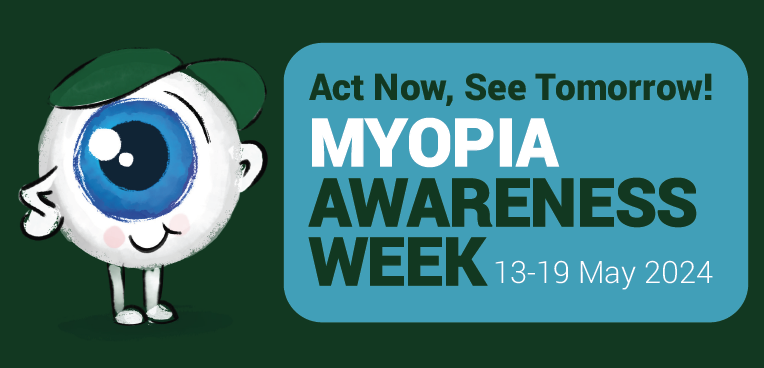
Krupa Philip, PhD
BHVI
Although 2020 is a year that many will consider as best forgotten or relegated to history, for spectacle-based myopia management strategies, it marks the end of a decade of rapid and significant improvements to slow myopia.
Up until 2010, the only options available to control myopia with spectacle-based strategies were progressive addition or bifocal spectacles. Although undercorrection was widely practiced, it was shown to increase myopia progression.1 2, 3 Bifocals and progressive addition lenses (PALs) were found effective only in few categories, such as those with a larger lag of accommodation4-7 or faster myopia progression in myopia.6, 8 An exception was executive bifocals with and without base-in prism that reduced myopic progression by approximately 51 percent (spherical equivalent) compared to single-vision spectacles.7 Executive bifocal spectacle lenses incorporated with base-in prism are available in many countries.9
Spectacle Lenses 2010 to 2020
From 2010 onward, there was a shift toward developing and testing myopia management devices that altered peripheral retinal defocus based on landmark studies that found that peripheral retina had a significant role in emmetropisation and refractive error development.11 These strategies were based on inducing relative myopic defocus or reducing relative hyperopic defocus at the retinal periphery.
Utilizing this strategy, the first-ever trial designed and tested three designs for peripheral defocus management but found only one design to provide reasonable control in a subgroup of children with parental myopia.10 A reduction in myopic progression by 15.4 percent (spherical equivalent) and axial length elongation by 13.9 percent was observed with these lenses in this subgroup of participants.11 These lenses have distance correction at the center for clear central vision with asymmetric design at the periphery incorporating continuous plus power for altering peripheral optics.12 These lenses also have an extended area of distance correction in the lower portion with no additional power.
Likewise, positively aspherisized PALS with add power (+1.50 D) reduced myopia progression by 20 percent compared to single vision spectacle lenses.13 These lenses were designed to reduce both lag of accommodation and hyperopic defocus in the peripheral retina.13
Although these first-generation lenses with continuous power profiles found limited success,10 they spurred significant research in this area. A recent new entrant, the D.I.M.S. or Defocus Incorporated Multiple Segments spectacle lenses (MiyoSmart by HOYA) reportedly slow myopia by 52 percent (spherical equivalent) and axial length by 62 percent compared to single vision spectacles.14, 15 The D.I.M.S. spectacle lens has around 400 multiple segments of plus powered lenslets (+3.50D) in the mid-peripheral portion of the spectacle lens surrounding a clear central zone for distance refractive correction.14 Each segment is approximately 1mm in diameter. The multiple segments induce myopic defocus in front and at the retina periphery while simultaneously providing clear central vision.
The latest entrant in the world of myopia management using spectacle lenses is Essilor’s Stellest spectacle lens, which in comparison to single vision lenses, is reported to slow myopia by approximately 63 percent for spherical equivalent refractive error and approximately 64 percent for axial length.16 The Stellest lens is said to incorporate H.A.L.T. (Highly Aspherical Lenslet Target) technology to control myopia progression. The H.A.L.T. technology comprises a group of aspherical lenslets on 11 rings surrounding a clear central distance correction zone that is said to produce a volume of myopic defocus signal in front of the retina.16
Additionally, this decade also saw a new myopia management technology offering from SightGlass Vision, Inc., through contrast reduction.17 This novel spectacle lens design (SightGlass Vision D.O.T. lenses) incorporating “Light diffusion technology” has a clear central aperture surrounded by multiple dots that reduce the peripheral retinal contrast by at least one-third to half (30 percent to 60 percent) compared to central or on-axis contrast.18 The test lenses demonstrated reasonable myopia control with slowing of myopia progression by 59 percent and 74 percent (spherical equivalent) and reduction in axial length elongation by 33 percent and 50 percent.19 This technology is based on the hypothesis that high contrast signals at retinal photoreceptors induce the eye to grow and low contrast induce the eye to slow the axial growth.19 Fig 1 details the reduction in spherical equivalent and axial length elongation observed with various myopia control spectacle devices obtained from peer-reviewed articles,4, 7, 13, 14, 20-22 trade journals16 and non-peer-reviewed articles.19

Myopia Management Strategies with Spectacles
Spectacles for myopia management are among the most favored approaches as even younger children can be easily fitted with spectacles. Additionally, the spectacles have little or no side-effects compared to other optical treatments such as contact lenses and pharmaceutical therapies such as atropine.
Age: Younger ages are associated with greater annual progression, and thus early-onset myopia is likely to result in higher levels of final net myopia.23 Importantly, spectacles can be fitted at younger ages.
Wearing time: Unlike, myopia control contact lenses,24 no correlation was observed for myopia control treatment effect and spectacle wear time, most likely due to high compliance observed in spectacle wearers.14 Nevertheless, spectacle wear during all waking hours is recommended for better myopia control treatment effect.
Eye examinations: It is evidenced that younger age groups benefit highly from myopia control treatments. With younger age groups associated with greater annual progression, 23 it is recommended to conduct half-yearly or yearly eye examinations while using novel myopia control treatments.
Fitting requirements: It is essential to follow the appropriate fitting guide. Most of these myopia control spectacles have a clear central portion for distance vision and mid-peripheral or peripheral portion having multiple plus powered lenslets or contrast reduction dots. Fitting procedures include measurement of monocular pupil height and pupillary distance and accurate alignment of the optical center of each lens with the patient’s pupil center.
- Chung K, Mohidin N, O’Leary DJ. Undercorrection of myopia enhances rather than inhibits myopia progression. Vision Res. 2002; 42:2555-9.
- Logan NS, Wolffsohn JS. Role of un-correction, under-correction and over-correction of myopia as a strategy for slowing myopic progression. Clin Exp Optom. 2020; 103:133-7.
- Yazdani N, Sadeghi R, Ehsaei A, Taghipour A, Hasanzadeh S, Zarifmahmoudi L, et al. Under-correction or full correction of myopia? A meta-analysis. J Optom. 2020.
- Gwiazda J, Hyman L, Hussein M, Everett D, Norton TT, Kurtz D, et al. A randomized clinical trial of progressive addition lenses versus single vision lenses on the progression of myopia in children. Invest Ophthalmol Vis Sci. 2003; 44:1492-500.
- Hasebe S, Ohtsuki H, Nonaka T, Nakatsuka C, Miyata M, Hamasaki I, et al. Effect of progressive addition lenses on myopia progression in Japanese children: a prospective, randomized, double-masked, crossover trial. Invest Ophthalmol Vis Sci. 2008; 49:2781-9.
- Cheng D, Schmid KL, Woo GC, Drobe B. Randomized trial of effect of bifocal and prismatic bifocal spectacles on myopic progression: two-year results. Arch Ophthalmol. 2010; 128:12-9.
- Cheng D, Woo GC, Drobe B, Schmid KL. Effect of bifocal and prismatic bifocal spectacles on myopia progression in children: three-year results of a randomized clinical trial. J.A.M.A. Ophthalmol. 2014; 132:258-64.
- Leung JT, Brown B. Progression of myopia in Hong Kong Chinese schoolchildren is slowed by wearing progressive lenses. Optom Vis Sci. 1999; 76:346-54.
- MyopiLux lenses for myopia control. https://www.essilor.com.sg/products/myopilux. [8/12/2020].
- Sankaridurg P, Donovan L, Varnas S, Ho A, Chen X, Martinez A, et al. Spectacle lenses designed to reduce progression of myopia: 12-month results. Optom Vis Sci. 2010; 87:631-41.
- Wildsoet CF, Chia A, Cho P, Guggenheim JA, Polling J.R., Read S, et al. I.M.I. – Interventions Myopia Institute: Interventions for Controlling Myopia Onset and Progression Report. Invest Ophthalmol Vis Sci. 2019; 60:M106-M31.
- ZEISS MyoVision Pro Lenses. The next generation of ZEISS myopia management single vision lenses specially designed for children.https://www.zeiss.com.au/vision-care/eye-care-professionals/products/spectacle-lenses/myopia-management-lens-solutions/myovision-pro-lenses.html. [8/12/2020].
- Hasebe S, Jun J, Varnas SR. Myopia control with positively aspherized progressive addition lenses: a 2-year, multicenter, randomized, controlled trial. Invest Ophthalmol Vis Sci. 2014; 55:7177-88.
- Lam C.S.Y., Tang WC, Tse DY, Lee R.P.K., Chun R.K.M., Hasegawa K, et al. Defocus Incorporated Multiple Segments (DIMS) spectacle lenses slow myopia progression: a 2-year randomised clinical trial. Br J Ophthalmol. 2019.
- MiyoSmart https://www.hoyavision.com/au/discover-products/for-eye-care-professionals/special-lenses2/myopia-management/. [8/12/2020].
- Black K. Essilor’s Reveals Results of “Game-changing” Stellest Lens for Myopia https://www.mivision.com.au/2020/09/essilors-reveals-results-of-game-changing-stellest-lens-for-myopia/. mivision; 2020 [8/12/2020].
- SightGlass Vision I. Control of Myopia Using Novel Spectacle Lens Designs (CYPRESS) https://clinicaltrials.gov/ct2/show/NCT03623074. N.I.H. U.S. National Library of Medicine Clinical Trials.gov; 2020.
- Neitz J, Kuchenbecker J, Neitz M, inventors; Ophthalmic lenses for treating myopia patent U.S. 20190033619A1. 2019.
- Rappon J, Neitz J, Neitz M. Novel D.O.T. Lenses from SightGlass Vision Show Great Promise to Fight Myopia. http://reviewofmm.com/novel-dot-lenses-from-sightglass-vision-show-great-promise-to-fight-myopia/. Review of Myopia Management; 2020 [17/12/2020].
- Edwards MH, Li RW, Lam CS, Lew JK, Yu BS. The Hong Kong progressive lens myopia control study: study design and main findings. Invest Ophthalmol Vis Sci. 2002; 43:2852-8.
- Berntsen DA, Barr CD, Mutti DO, Zadnik K. Peripheral defocus and myopia progression in myopic children randomly assigned to wear single vision and progressive addition lenses. Invest Ophthalmol Vis Sci. 2013; 54:5761-70.
- Correction of Myopia Evaluation Trial 2 Study Group for the Pediatric Eye Disease Investigator G. Progressive-addition lenses versus single-vision lenses for slowing progression of myopia in children with high accommodative lag and near esophoria. Invest Ophthalmol Vis Sci. 2011; 52:2749-57.
- Sankaridurg P. A less myopic future: what are the prospects? Clin Exp Optom. 2015; 98:494-6.
- Lam CS, Tang WC, Tse DY, Tang YY, To CH. Defocus Incorporated Soft Contact (DISC) lens slows myopia progression in Hong Kong Chinese schoolchildren: a 2-year randomised clinical trial. Br J Ophthalmol. 2014; 98:40-5.




